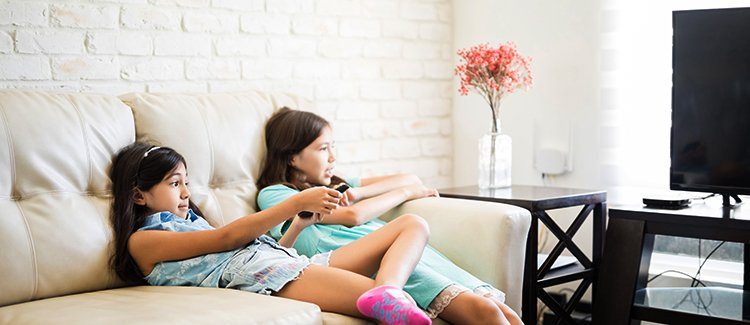Join the club. As this generation of digital natives perfect new ways to watch TV and movies — or should I say Youtube, Hulu, and TikTok — reading is getting pushed down the list of leisure activities. My daughter’s new invention: taking her phone to bed, turning down the sound and screen light so it’s neither visible nor audible, and watching an old episode of The Office. Honestly, what’s the point when she can’t hear it and can barely see it!? Why not just read?
No matter how inventively kids try to avoid reading, the facts remain the same. Reading is still the most essential skill in your child’s learning toolbox. And reading for pleasure is especially crucial: if you want your child to be a lifelong learner, teach them how to enjoy reading and learning on their own, and they are armed to adapt to all sort of challenges.
So, what’s the trick for getting kids to read in this era of 24/7 binge watching?
Here’s an idea: Link screen time rewards to reading. Have your child read the book, then watch the movie with the whole family. Make it a treat. Make popcorn and cocoa. But make sure your child reads the book first. Your child will love being the expert and telling the rest of the family about how the movie tells the story differently from the book.
This is a classic example of something behavioral psychologists who study motivation call “temptation bundling.” To tackle something challenging, couple it with an activity that you love to do. Try teaching your fifth grader this idea and see if they can use temptation bundling to help with that household chore (like your child making her favorite meal for the family dinner) or dreaded homework (including a drawing to accompany her assignment) they’ve been putting off.
Here’s a list of 5th grade books so great, they made a movie. (And here’s a list of grade-based movie-adapted book lists for PreK through 8th grade.) Want more? There are oodles of movie-book adaptations here from this list created by teachers and from Common Sense Media.
You can apply this trick with new releases based on books. Suggest a goal of going out to see the movie on opening night (so long as your child finishes the book first). One mother I know discovered that this persuasive strategy supercharged her daughter’s reading. When the mother announced that A Wrinkle in Time was coming to town next week, her daughter didn’t just beg to go to the movie, but to get a ride to the library so she could start the book in time to finish before opening night.
Once your child has read a book and seen the movie, start a conversation. In late elementary school and early middle school, your child’s English teacher will be leading a lot of conversations about different forms of the same story, like how the book and the movie are similar and different, or how a story differs from two different characters’ points of view.
Here are some questions to ask:
- How did the stories differ?
- How were the characters you imagined in your head different from the actors or cartoon characters on the screen?
- What was better about the book?
- What was better about the movie?
- If you made the movie, how would you have done it differently from the director?
- Is the main message of the book and the movie the same, or are they different?
Movies almost always have to cut out parts of the book to fit into a two-hour story. What was cut, and why do you think the filmmakers chose to cut those parts (or characters)?
If these conversations are new to you and your child, don’t worry if your child is a little tight-lipped with their ideas. It will take time for your child to see this whole book-movie discussion as a part of normal family life. Try it a few times with a few different book/movie combos, and your child will become more confident and begin reading and watching with your conversation in mind. Having such conversations helps build children’s reading skills — and their confidence in class discussions.





